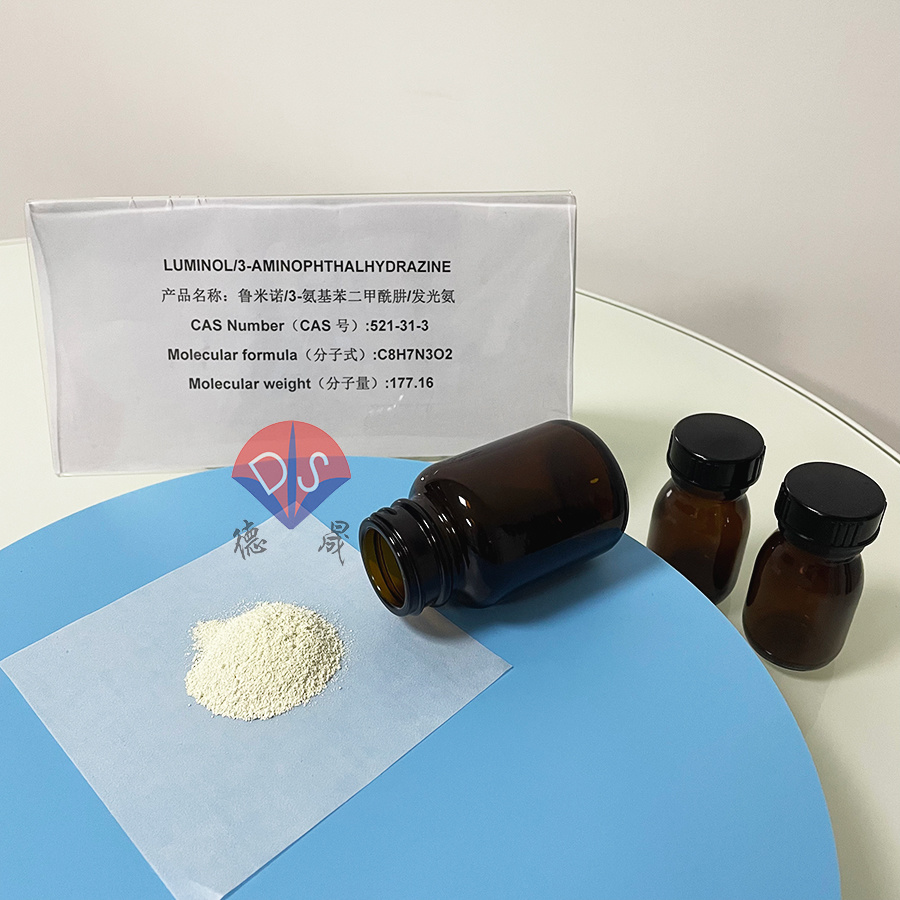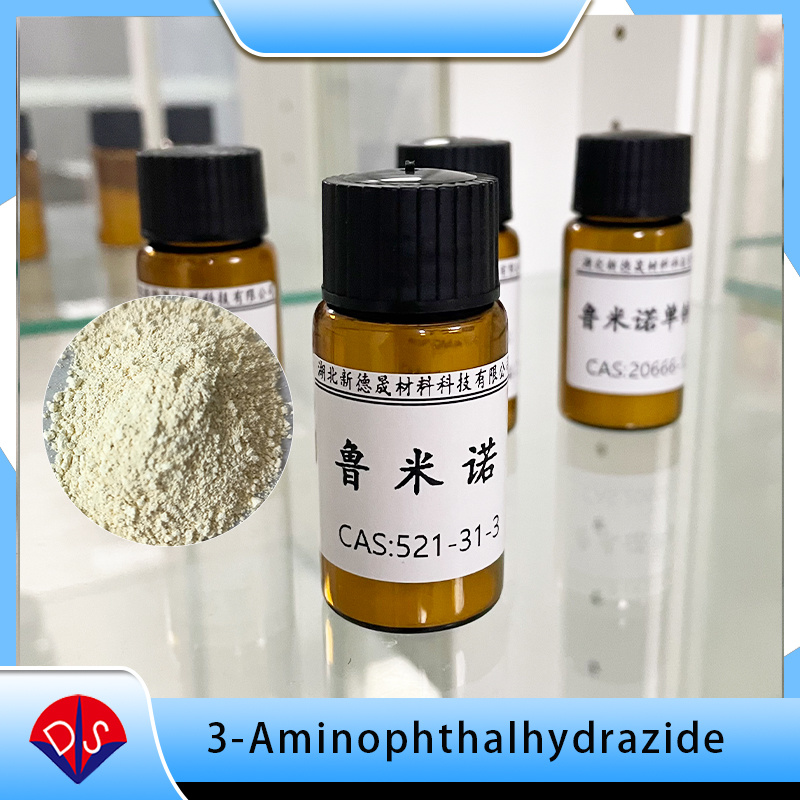Application of Luminol Chemiluminescence in Polyurethane Photosensitizer Mediated Photodynamic Therapy
Release time:
2025-04-30
Photodynamic therapy, as an emerging treatment method, has shown great potential in cancer treatment and drug-resistant bacterial infections in recent years. The principle is to generate singlet oxygen (¹ O ₂) under the excitation of a specific wavelength light source through a photosensitizer, thereby killing cancer cells or pathogens. However, traditional photodynamic therapy relies on excitation from external light sources such as lasers or LEDs, which limits its application in deep tumor treatment.

Luminol powder
To solve this problem, scientists have begun exploring the use of self luminous compounds as light sources to achieve the goal of in-situ excitation photodynamic therapy. Among them, the combination of Luminol chemiluminescence system and polyurethane photosensitizer has brought revolutionary breakthroughs to photodynamic therapy.
Luminol is a classic chemiluminescent compound that produces blue light under the catalysis of horseradish peroxidase (HRP) and hydrogen peroxide (H ₂ O ₂). In order to complement the luminol chemiluminescence system, the research team synthesized a soluble polyurethane photosensitizer based on protoporphyrin. Polyurethane materials have good biocompatibility, degradability, and controllability, and can efficiently load photosensitizer molecules. With the addition of protoporphyrin, this polyurethane photosensitizer can generate a large amount of singlet oxygen under the excitation of luminol chemiluminescence, thereby exerting the effect of photodynamic therapy.
In order to complement the luminol chemiluminescence system, the research team synthesized a soluble polyurethane photosensitizer based on protoporphyrin. Polyurethane materials have good biocompatibility, degradability, and controllability, and can efficiently load photosensitizer molecules. With the addition of protoporphyrin, this polyurethane photosensitizer can generate a large amount of singlet oxygen under the excitation of luminol chemiluminescence, thereby exerting the effect of photodynamic therapy.
The experimental results indicate that under the excitation of luminol chemiluminescence light source, polyurethane photosensitizer can efficiently generate singlet oxygen through photodynamic reaction. This singlet oxygen has extremely strong oxidizing ability, which can effectively kill bacteria and inactivate skin cancer cells. Through scanning electron microscopy and fluorescence staining analysis, researchers further validated the photodynamic inactivation effect of bacteria and cells, confirming the feasibility of the luminol chemiluminescence system in photodynamic therapy.
The chemiluminescence of luminol can excite polyurethane photosensitizers through the Resonance Energy Transfer (RET) mechanism. Resonance energy transfer is a non radiative energy transfer process that efficiently transfers chemiluminescent light energy to photosensitizers, thereby stimulating their production of singlet oxygen. This mechanism not only improves the efficiency of photodynamic therapy, but also reduces dependence on external light sources, providing new possibilities for deep tumor treatment.

Product packaging
The development of high-performance materials is crucial in the research and application of photodynamic therapy. As a company dedicated to the research and development of polymer materials, Desheng New Materials has always been committed to providing professional and reliable chemiluminescence reagent products for enterprises. Its products have broad application prospects in multiple fields. In the future, Desheng New Materials will continue to adhere to the concept of "innovation driven, quality-oriented" and contribute to the development of photodynamic therapy and other medical technologies.
News
Contact details
Contact number
Address: C8, Guanggu United Science and Technology City, Ezhou City, Hubei Province
Fax:0711-3704 589
Follow us



